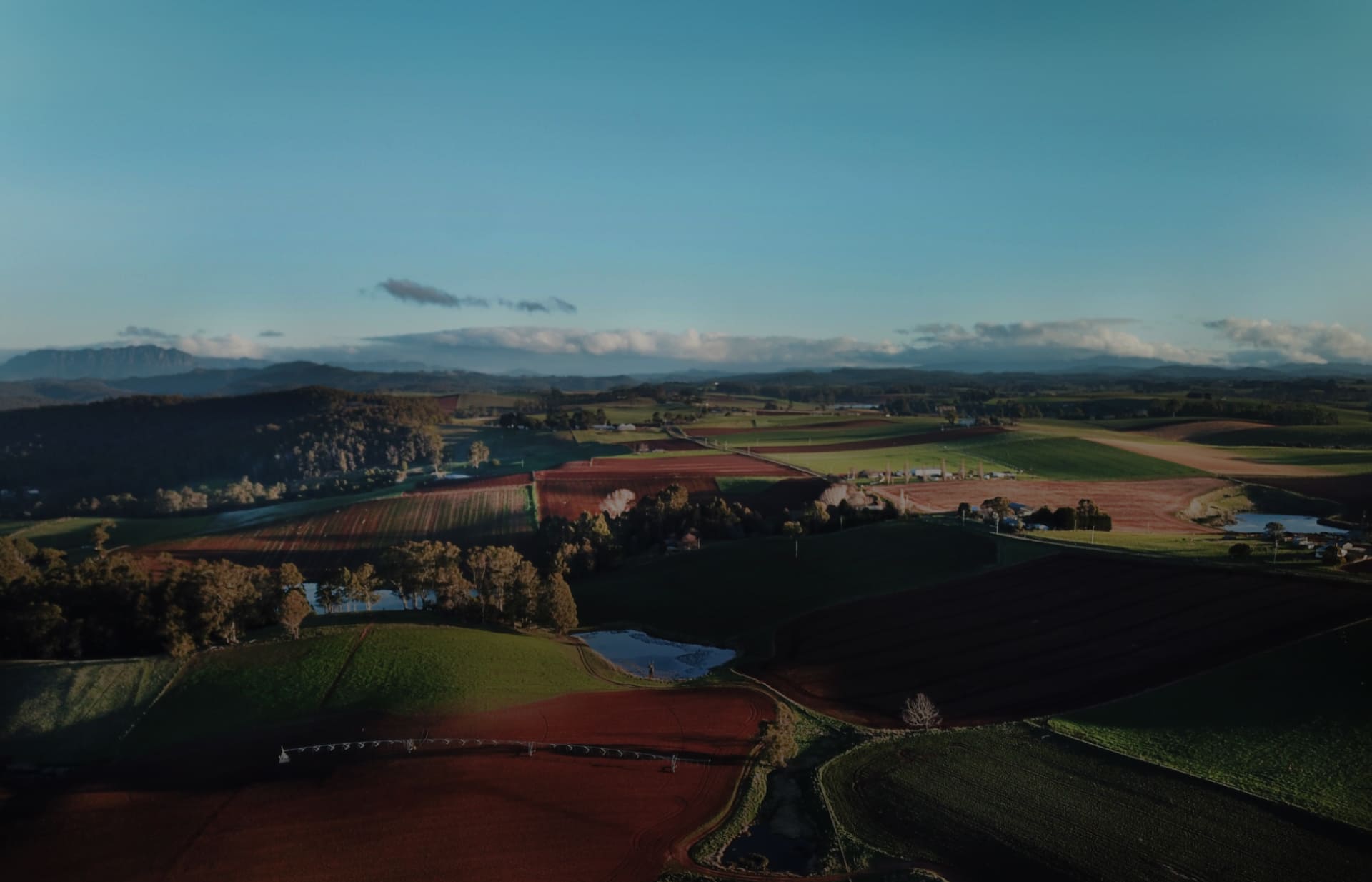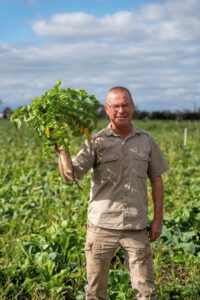Simply Better crisps starts with high quality potatoes
Harvest of onion trials in SA continue to shed light on detection and management of onion basal rot.
Developing strategies to inhibit Onion White Rot
A local focus to build strategies for vegie growers to prepare and rebuild
Grower input key to management of levy investments
Cross-industry collaboration key for fall armyworm management
Changing structure of school canteens offers potential for vegetables
Fall armyworm symposium keeps industry informed
Making the most of brassicas in cover crops
Mixed results inform cover crop success
In April 2024, the Devon Meadows farm of Victorian grower Peter Schreurs & Sons was hit with 60mm of rain overnight. The farm had had almost no runoff or erosion, which according to Darren and Mark Schreurs, is the result of many years of cover crops transforming the soil into a carbon-rich sponge.
As one of 14 trial sites for the Optimising cover cropping for the Australian vegetable industry (VG16068) project between 2018 and 2020, the Devon Meadows site was used to investigate cover crops and mycorrhizal fungi to benefit vegetable crops, in this case in leeks.
One of the key benefits of mycorrhizal fungi is to enable plants to draw more nutrients and water from the soil and increase plant tolerance to plants and diseases.
The initial results for the Schreurs leek crop were not profound. It is believed that the phosphorous rich nature of the Devon Meadows soil may have restricted the colonisation of the fungi, combined with the regular working of the soil for harvest and planting required by leeks, which disturbs the soil.
However, the benefits of using cover crops for soil health and successive leek crops have continued to improve in the four years since the trial.
“It was disappointing that the mycorrhizal fungi trial did not give the results hoped for, but the use of cover crops has energised the soil, so now we have a philosophy of keeping our soil covered with a cover crop to suit the time of year,” said Darren Schreurs, who runs Peter Schreurs & Sons in partnership with his brothers Mark and Paul.
Mark Schreurs oversees the rotation of leeks to cover crops, using warm and cool cover crop mixes that suit the time of year. The aim is to minimise the time that soil is bare between leek crops. A detailed record is kept of the species used in the cover crops for rotation – some mixes may have only two or three species, some up to ten species depending on the needs of the soil.
In most cases a mix of cereals and grasses, legumes and brassicas will be used such as sorghum, sunflowers, vetch and tillage radish will be used. A flowering plant will be part of the mix to encourage pollinators.
Once the dominant species start to mature, Mark will roll and crimp and repeat the process two weeks later, to give other plants in the cover crop a chance to come through. By rolling and crimping the dominant species, a protective layer is in place on top of the soil to act as a mulch and reduce the risk of it going to seed.
As Darren pointed out, harvesting leeks requires that the soil be disturbed as the entire plant is removed. By planting a cover crop after harvest, the soil is given a chance to recover its biology and diversity.
The myriad benefits include an increase in pest and disease resilience; improved soil organic matter; improved nutrient uptake and water holding capacity.
As Mark explains it, the improvement in their soil’s water-holding capacity since they started cover cropping has “added another good size dam” to the farm and the drainage is far better.
“When we did the trial, we were averaging 0.5 per cent organic matter, now it is closer to five per cent,” said Mark.
The increase in beneficial insects across the farm has been noticeable, and Mark and Darren give nature time to combat pests and disease, rather than use chemistries. The ultimate aim is to drive chemistry use to a minimum.
“The biodiversity we get from the cover crops makes the whole farm that much more resilient. The field may look like it is sitting there doing nothing – and the temptation is to put another cash crop in – but the soil is taking in organic matter, building microbe numbers and nutrients ready for the next crop, not taking it away.”
 While there will always be trade-offs, with constant improvement and making the whole system more resilient, Mark and Darren want the farm to be better than when they arrived.
While there will always be trade-offs, with constant improvement and making the whole system more resilient, Mark and Darren want the farm to be better than when they arrived.
What was the research about
This investment, which ran from 2017 to 2020, supported Australian vegetable growers to effectively use cover crops to boost soil health and reap productivity benefits. Bringing together a consortium of research partners, it built on existing cover crop trial sites and established new ones to explore the how, why and when to best use cover crops across Australia’s main vegetable growing regions.
Cover crops are one of the most useful tools for managing intensive vegetable growing soils. The integration of cover crops into vegetable production can improve soil health by building soil structure and condition, reducing erosion, adding nitrogen, improving nutrient recycling, and contributing to weed and soil-borne disease control.
The work explored cover crop species, cropping sequences, sowing windows and transition practices under a range of soil types, climates and crops, and delivered clear grower guidelines for using cover cropping that are specific to growing regions.
The field research generated new information on the use and agronomy of cover crops to manage soil structure, soil microbial communities, specific beneficial microbes, and soil-borne diseases under Australian conditions. The information was combined with practical industry knowledge and international research to deliver information on cover crops to the vegetable industry.
This article first appeared in Australian Grower Winter 2024 magazine


